Ring Weaving
Whereas most sorts of weaving are performed using open-ended
strands, ring weaving is performed using closed loops.
Here's a "3-in-1" ring weaving pattern:
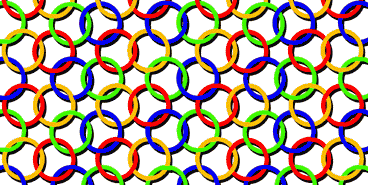
Hexagonal "3-in-1" fabric
The main application of ring weaving currently appears to be
making chainmail fabrics.
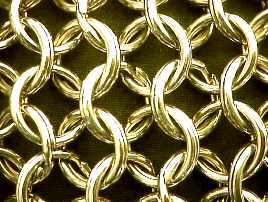
Classical "4-in-1" fabric
Becasue of its historical significance various possibilities
for weaving out of rings have been studied
extensively since ancient times.

Soccer ball
The above sphere is woven using the pattern of a soccer
ball. It has 12 pentagons and 20 hexagons.
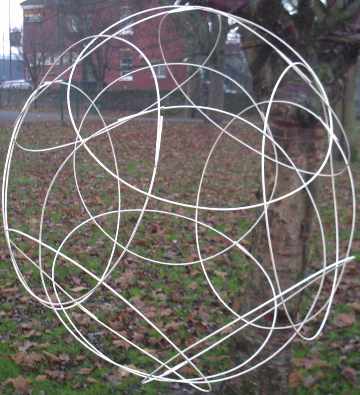
Dodecahedron
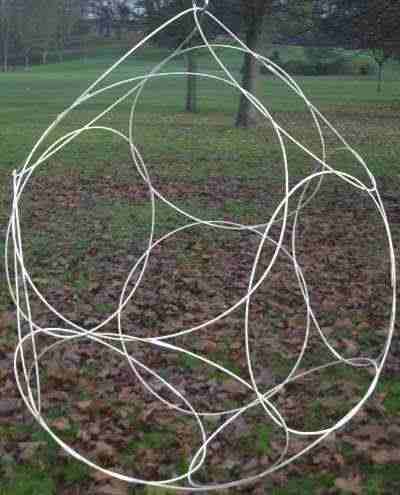
Dodecahedron II
The above sphere is a woven dodecahedron.
A fabric composed of many small rings typically has quite
different properties from one produced using triaxial
weaving.
These designs are related to the
other woven spheres which
I have constructed.
Those spheres use a more conventional sort of triaxial
weaving - but are also made entirely out of rings.
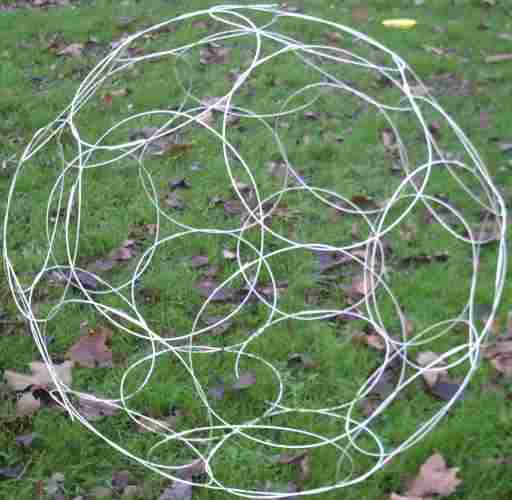
Soccer ball
Pros and cons
Traditionally, weaving with rings has been employed when a flexible
fabric is needed - but the individual elements need to be strong.
Chainmail a good example of this.
Another advantage to weaving with rings is that the edges of the fabric
have no sharp edges.
As an example of another application where strength,
lightness, and a lack of sharp edges can be useful, consider
bottoms of baskets.
Large-scale structures
The digrams illustrated here appear to be very lightweight
for the area they enclose - perhaps even more so
than triaxial weaving designs.
Also they have a pleasing modularity - as the "dome"
illustration suggests.
They also have some aesthetically pleasing properties.
However there are some major drawbacks compared to the
triaxail woven designs:
Materials are usually available in straight sections - not
rings. A material needs to be flexible to be bent into a
small ring - and that flexibility is usually incompatible
with structural strength.
In the case of small rings, you can buy pre-formed washers,
split washers and split rings as construction materials -
and these are designed to be round. However on
larger scales such pre-formed round materials are not so
conveniently available.
As another drawback, when flat-section materials are
available bending them into small loops is easy to do in one
direction and hard to do in the other. The more difficult
direction is the one the material would need to be bent into
for the result to look like a flat washer. If the material
is bent in the other direction, the flat section fails to
lie in the same plane as the resulting fabric - and the
material strongly resists the weaving process.

Dome
Links
Large scale ring weaving links
Rick Flowerday
Geodesic Beyond
Geometry Of Fullerenes
Chainmail links
MailleArtisans - very comprehensive list of existing ring fabrics
ChainmailBasket
Armchair Armoury
Chainmail Curved Spaces
Article on making chainmail
Ring resources
BraidDirect - split rings (UK)
Berkley - flat rings (UK)
Armchair Armoury chainmail rings (UK)
worthco - split rings
Misc
Radiolaria - which illustrate a similar pattern
|